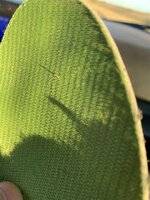I drew my first Antelope tag (Sept rifle)! That said, my only "antelope-specific" education is from watching several dozen hunts on YouTube. What should I know that I probably haven't picked up on?
I've killed plenty of other animals (deer, elk, pigs, javelina, bear, etc...) and have done a lot of western hunting. The unit I drew is 80%+ success.
I think most YouTube videos of antelope stalks don’t do a good job of talking a person through their decision making process. Antelope country is flatish, but the slightest wash depression can make the difference between duck walking 100 yards or crawling. I think it’s often misunderstood that you don’t want to simply hand and knee it until you’re “close enough”, but rather aim for a shooting location, usually a slight knob or maybe just thicker/taller sage.
There is no amount of reading that can take the place of doing it. When you first arrive in the field as a rookie, I’m a big proponent of doing a few practice stalks on the first bucks you see. The more you do the better you’ll become, and the last thing you want is to be practicing on the biggest buck of the trip.
There is a “feel” you need to develop to know when to push it hard and when to move slow, and which animals aren’t approachable. The farther you can shoot accurately the better, but beware wind will usually be present - sometimes the stalking end point is chosen to be directly down wind so very little wind correction is needed.
The videos I don’t understand show guys on wide open public land hunting on foot like it’s mule deer season. You will get laughed at by the locals doing that. Unless you’re driving a Geo Metro, hunt like the locals do - glass from roads or jeep trails, especially with spotting scopes, until you find something worth going after. Randomly walking sagebrush country hoping to run into a buster buck is a very low odds method. This is also a reason to hunt out of a 4x4 vehicle with decent clearance - jeep trails are usually easy going, but being able to make it across washed out sections, or draws with very large brush, can save miles of back tracking. Maps showing the smallest two track jeep trails are essential - figure out where to glass from to see areas other people aren’t seeing - look up drainages, get up high to get a feel for what’s where, and constantly look for slight depressions that hide a few goats. You may look at the exact same country 10 times and think you know every antelope by name, until something pops up from an unseen draw that has kept them out of sight the whole time.
This will become obvious eventually, but don’t ever follow a two track over a ridge or knob if you can’t see where it’s going. Seismic trucks have made two tracks all across the west, sometimes going to the edge of drop offs - don’t make the locals laugh by driving over a bluff.
I’m not saying you need to be super aggressive, but antelope are known for moving around - when you see a good one, don’t diddle around with a plan that will take hours - the goat will walk off, or another hunter will assume he’s fair game and put the smash on him. This is combat hunting - don’t share information on the big buck two miles away with everyone that happens by, or that person may drive straight there and kill it. When you’re passed by another vehicle stop glassing and tell them you haven’t seen anything. If you’re stopped and looking at a decent buck 1000 yards away, don’t be offended if another truck stops 50 yards from you and kills the goat. It’s combat hunting. Lol
Get to know what you’re looking at and how realistic your expectations are. Some good years we’ve passed on half a dozen 15” goats a day, because they were funny shaped, or had small or broken prongs. In a bad year there may not be that many 14-1/2” racks. Hunt with your eyes.

